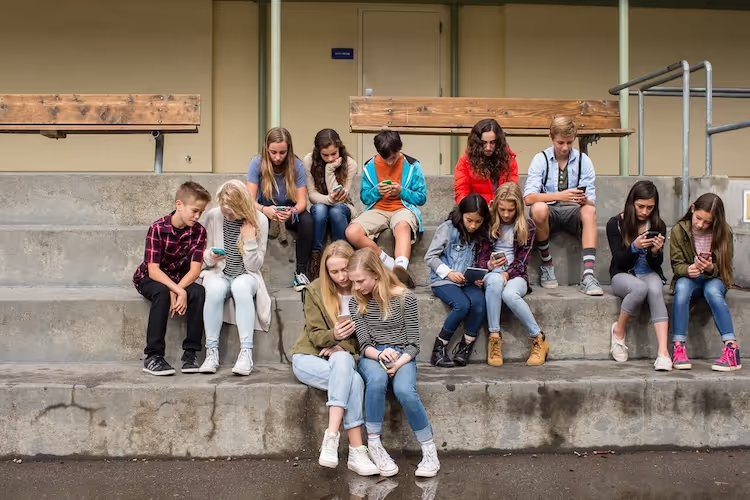


Pokemon GO is sweeping the nation. Kids (and adults) are running around trying to spot imaginary characters floating in the real world. It’s getting kids outside and moving but they are still looking down at their screens. This is a highly seductive game that has found a way to tap into the reward centers of teen’s brains. Some things to know about teen’s brains:
Most of the kids out there are just having fun and exhibiting compulsive thoughts, not necessarily addictive behavior, but if you feel like your child is struggling with a game addiction this is what to look for:
Distraction is a real problem with this game. Whether they are walking without looking and then falling and bumping into things or using it while driving. this can be physically dangerous. Distracted driving is one of the leading causes of teen death. According to the NHTSA "Ten percent of all drivers 15 to 19 years old involved in fatal crashes were reported as distracted at the time of the crashes. This age group has the largest proportion of drivers who were distracted at the time of the crashes."
Please tell your kids to look up.
“Playing the game, which appeals to a wide range of ages, involves various safety and security issues, including allowing the possibility of full access to your Google account (for players who log in via Google) -- though the developers are in the process of addressing this situation at the time of this review. Other risks include physical injury due to distraction, being directed to unsafe places or onto private property, and even becoming a target for assault or robbery (all of these things have already happened to players in the real world). A player's location is tracked, stored, and revealed to nearby players, including both children and adults.”
For those kids that are inside playing video games for hours, this is an improvement. But, for kids that are not generally seduced by games, this seems to be pulling them in too. Kids are already spending a huge number of hours on their devices. Kaiser Family Foundation survey found that boys spend about 1 1⁄2 hours a day on average playing video games, while girls spend on average about 40 minutes day playing video games. On the other hand, according to a Common Sense Media census, girls spend on average 1 1⁄2 hours a day on social media while boys spend about 50 minutes per day. One of the big questions is: does this replace the time youth spend on other games and social media or does it add to it?
What do you think?
Learn more about showing our movies in your school or community!
Join Screenagers filmmaker Delaney Ruston MD for our latest Podcast

Learn more about our Screen-Free Sleep campaign at the website!
Our movie made for parents and educators of younger kids
Learn more about showing our movies in your school or community!
Learn more about showing our movies in your school or community!
Join Screenagers filmmaker Delaney Ruston MD for our latest Podcast

Learn more about our Screen-Free Sleep campaign at the website!
Our movie made for parents and educators of younger kids
Join Screenagers filmmaker Delaney Ruston MD for our latest Podcast
As we’re about to celebrate 10 years of Screenagers, we want to hear what’s been most helpful and what you’d like to see next.
Please click here to share your thoughts with us in our community survey. It only takes 5–10 minutes, and everyone who completes it will be entered to win one of five $50 Amazon vouchers.
Pokemon GO is sweeping the nation. Kids (and adults) are running around trying to spot imaginary characters floating in the real world. It’s getting kids outside and moving but they are still looking down at their screens. This is a highly seductive game that has found a way to tap into the reward centers of teen’s brains. Some things to know about teen’s brains:
Most of the kids out there are just having fun and exhibiting compulsive thoughts, not necessarily addictive behavior, but if you feel like your child is struggling with a game addiction this is what to look for:
Distraction is a real problem with this game. Whether they are walking without looking and then falling and bumping into things or using it while driving. this can be physically dangerous. Distracted driving is one of the leading causes of teen death. According to the NHTSA "Ten percent of all drivers 15 to 19 years old involved in fatal crashes were reported as distracted at the time of the crashes. This age group has the largest proportion of drivers who were distracted at the time of the crashes."
Please tell your kids to look up.
“Playing the game, which appeals to a wide range of ages, involves various safety and security issues, including allowing the possibility of full access to your Google account (for players who log in via Google) -- though the developers are in the process of addressing this situation at the time of this review. Other risks include physical injury due to distraction, being directed to unsafe places or onto private property, and even becoming a target for assault or robbery (all of these things have already happened to players in the real world). A player's location is tracked, stored, and revealed to nearby players, including both children and adults.”
For those kids that are inside playing video games for hours, this is an improvement. But, for kids that are not generally seduced by games, this seems to be pulling them in too. Kids are already spending a huge number of hours on their devices. Kaiser Family Foundation survey found that boys spend about 1 1⁄2 hours a day on average playing video games, while girls spend on average about 40 minutes day playing video games. On the other hand, according to a Common Sense Media census, girls spend on average 1 1⁄2 hours a day on social media while boys spend about 50 minutes per day. One of the big questions is: does this replace the time youth spend on other games and social media or does it add to it?
What do you think?
Sign up here to receive the weekly Tech Talk Tuesdays newsletter from Screenagers filmmaker Delaney Ruston MD.
We respect your privacy.
Pokemon GO is sweeping the nation. Kids (and adults) are running around trying to spot imaginary characters floating in the real world. It’s getting kids outside and moving but they are still looking down at their screens. This is a highly seductive game that has found a way to tap into the reward centers of teen’s brains. Some things to know about teen’s brains:
Most of the kids out there are just having fun and exhibiting compulsive thoughts, not necessarily addictive behavior, but if you feel like your child is struggling with a game addiction this is what to look for:
Distraction is a real problem with this game. Whether they are walking without looking and then falling and bumping into things or using it while driving. this can be physically dangerous. Distracted driving is one of the leading causes of teen death. According to the NHTSA "Ten percent of all drivers 15 to 19 years old involved in fatal crashes were reported as distracted at the time of the crashes. This age group has the largest proportion of drivers who were distracted at the time of the crashes."
Please tell your kids to look up.
“Playing the game, which appeals to a wide range of ages, involves various safety and security issues, including allowing the possibility of full access to your Google account (for players who log in via Google) -- though the developers are in the process of addressing this situation at the time of this review. Other risks include physical injury due to distraction, being directed to unsafe places or onto private property, and even becoming a target for assault or robbery (all of these things have already happened to players in the real world). A player's location is tracked, stored, and revealed to nearby players, including both children and adults.”
For those kids that are inside playing video games for hours, this is an improvement. But, for kids that are not generally seduced by games, this seems to be pulling them in too. Kids are already spending a huge number of hours on their devices. Kaiser Family Foundation survey found that boys spend about 1 1⁄2 hours a day on average playing video games, while girls spend on average about 40 minutes day playing video games. On the other hand, according to a Common Sense Media census, girls spend on average 1 1⁄2 hours a day on social media while boys spend about 50 minutes per day. One of the big questions is: does this replace the time youth spend on other games and social media or does it add to it?
What do you think?

Games like Roblox and Fortnite, which are especially popular among younger video gamers, may seem highly appealing due to their free-to-play model. Of course, they are not truly free. Young people are powerfully compelled to purchase in game currencies using real money, which in turn are used to purchase virtual items like costumes (skins) and weapons. Learn more about how this works in practice and what we can do as parents to help guide our kids.
READ MORE >
For a long time, people have been talking about how video games might be linked to extreme acts of violence, such as school shootings. The fact is millions of youth have played violent video games, and far less than 1% will ever do any such acts of violence. Today I look at two studies that shed more light on the ACTUAL effects that violent games can have on youth behaviors.
READ MORE >for more like this, DR. DELANEY RUSTON'S NEW BOOK, PARENTING IN THE SCREEN AGE, IS THE DEFINITIVE GUIDE FOR TODAY’S PARENTS. WITH INSIGHTS ON SCREEN TIME FROM RESEARCHERS, INPUT FROM KIDS & TEENS, THIS BOOK IS PACKED WITH SOLUTIONS FOR HOW TO START AND SUSTAIN PRODUCTIVE FAMILY TALKS ABOUT TECHNOLOGY AND IT’S IMPACT ON OUR MENTAL WELLBEING.
